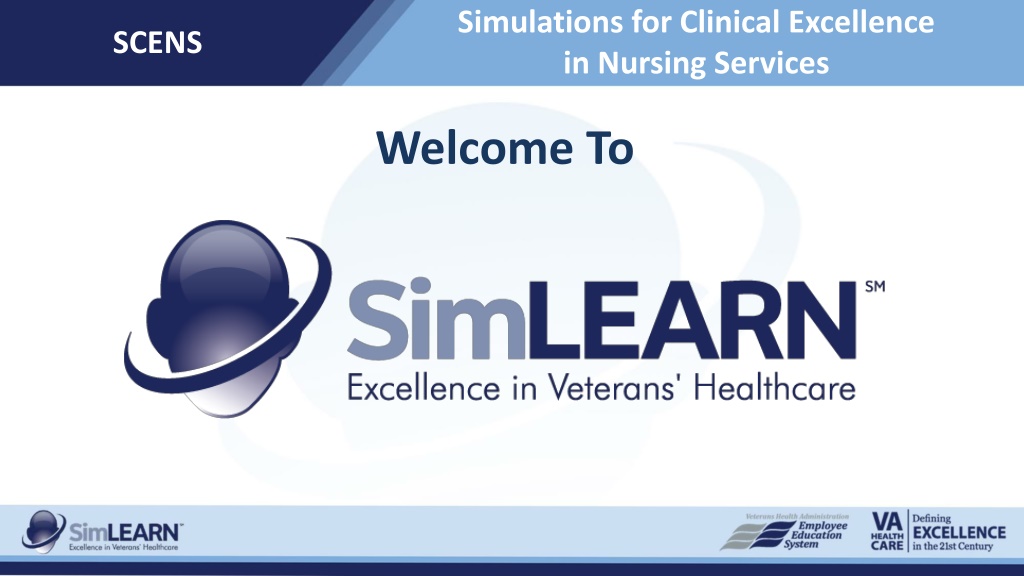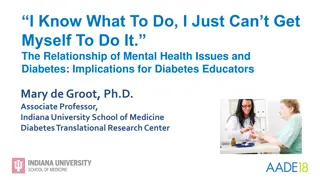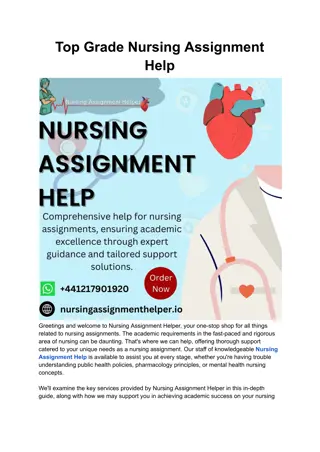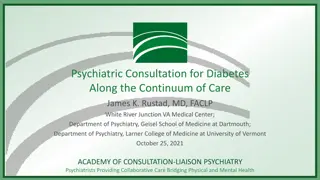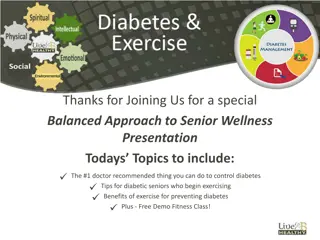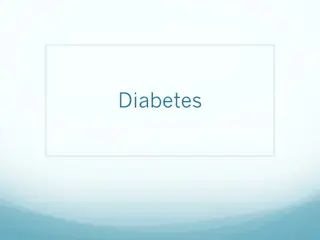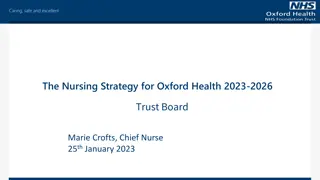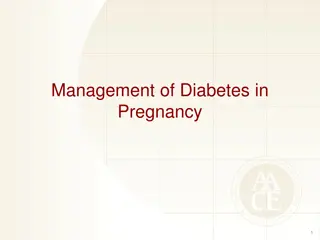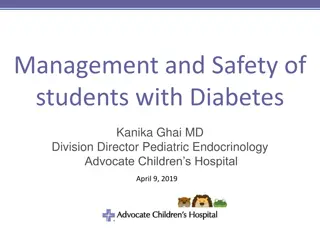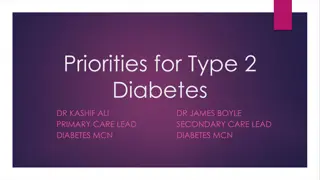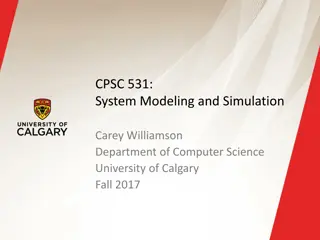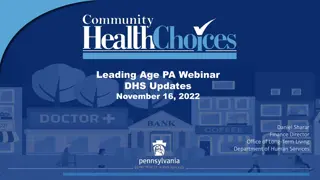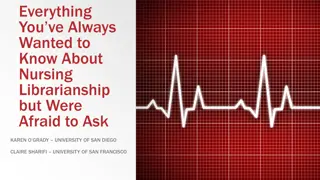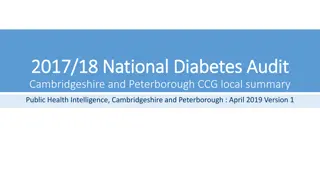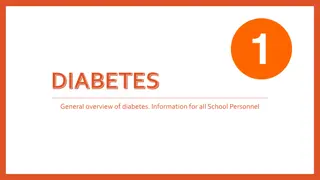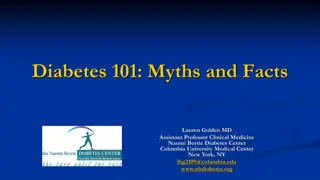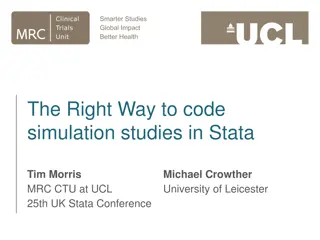Simulation-Based Training for Diabetes Care in Nursing
This simulation program, SCENS, focuses on enhancing nursing skills in managing diabetes-related complications such as hyper/hypoglycemia. The learning objectives include assessment, safe care provision, insulin administration, and effective communication. The simulation addresses the significant impact of diabetes on the population, especially among veterans. It covers topics like hyperglycemia, insulin administration, hypoglycemia management including the 15(30)/15 rule.
Download Presentation

Please find below an Image/Link to download the presentation.
The content on the website is provided AS IS for your information and personal use only. It may not be sold, licensed, or shared on other websites without obtaining consent from the author. Download presentation by click this link. If you encounter any issues during the download, it is possible that the publisher has removed the file from their server.
E N D
Presentation Transcript
Simulations for Clinical Excellence in Nursing Services SCENS Welcome To
Learning Objectives SCENS 1. Perform a focused assessment for the patient experiencing a reaction to hyper/hypoglycemia (LPN collects data) Demonstrate the steps required to provide safe and effective care for the patient with diabetes experiencing a hypo/hyperglycemic reaction Perform the safe administration of a subcutaneous insulin injection Communicate effectively when managing the care of the patient with diabetes experiencing a hyper/hypoglycemic reaction 2. 3. 4.
Why? SCENS Approximately 25.8 million Americans have diabetes 8.3 percent of the U.S. population Nearly 25% of all veterans have diabetes National Patient Safety Goals MyHealthyvet.va.gov VHA Directive 1164 VA Hypoglycemia Safety Initiative (HSI)
Veterans and Diabetes SCENS Close to 25% of all Veterans have Type 2 Diabetes Associated with being overweight or obesity Patients in VA facilities have a higher rate of obesity than the general population
Hyperglycemia SCENS Causes Clinical manifestations 3 P s Assessment Diagnostics Management Complications Diabetic Ketoacidosis (DKA) Hyperosmolar hyperglycemic state (HHS)
Insulin Administration SCENS Equipment Safety check Sites Technique 7
Hypoglycemia SCENS Causes Clinical manifestations Assessment Diagnostics Management Complications Seizure Coma Death
15(30)/15 Rule for Hypoglycemia SCENS Normal blood glucose 70-100 mg/dL according to the American Diabetes Association (ADA) Blood glucose less than 70 Administer 15 grams of carbohydrate 15 grams of carbohydrate examples Wait 15 minutes to re-check blood sugar If still below 70, add an additional 15 grams of carbohydrate But, if blood glucose is below 50, add an additional 30 grams of carbohydrate Wait another 15 minutes to re-check blood glucose
Focused Assessment SCENS Role of RN, LPN, UAP Targeted history Last time the patient ate or drank anything Medications List of medications and when they were last taken Role of RN, LPN, and UAP Predisposing factors and considerations Anticipate the need for equipment, supplies, and medications Delegate where possible
Hypoglycemia Protocol SCENS Rapid response activation American Diabetes Association Standards Apply oxygen for 93% sat or less per protocol 12 Lead ECG Establish IV access Fingerstick blood sugar Capillary Venous
Facility Specific SCENS Protocols Documentation Communication Know who to call Communicating with the patient/family Pertinent information to communicate ISBAR Equipment State licensure Scope of practice Certifications Job descriptions
Safety SCENS Labs and diagnostics Safety check for insulin Insulin administration Sites Technique Rights of medication administration Rights of medication administration Nursing process: ADPIE Assess; Diagnosis (Nursing); Plan; Implement; Evaluate Re-assess after interventions Recognize changes in the patient status
Potential Issues SCENS Psychosocial Outpatient versus inpatient Conscious versus unconscious Potential complications Transfer to another unit/facility
Summary SCENS 1. Discussed components of a focused assessment for the patient experiencing a reaction to hyper/hypoglycemia (LPN collects data) Reviewed the steps required to provide safe and effective care for the patient with diabetes experiencing a hypo/hyperglycemic reaction Discussed safe administration of a subcutaneous insulin injection Provided communication techniques to utilize when managing the care of the patient with diabetes experiencing a hyper/hypoglycemic reaction 2. 3. 4.
Diabetes: Outpatient or Inpatient SCENS Robert Harris Fifty eight (58) year-old male with a complaint of fingerstick blood sugars (FSBS) above 375 mg/dL for the past few days. His symptoms are fatigue, blurry vision, polydipsia, polyphagia, and polyuria. Past Medical History: Type 2 diabetes Hypertension Past Surgical History: Appendectomy Medications: Insulin Glargine 23 units subcutaneously daily Insulin Aspart 5 units subcutaneously with meals Lisinopril 20 mg by mouth daily Allergies: Penicillin
